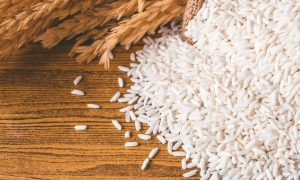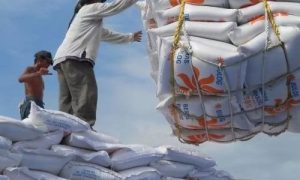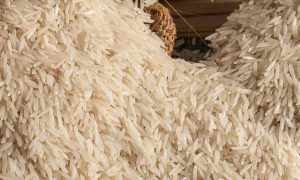Japan PM to make major policy shift to boost rice production

Japan will shift its rice policy in 2027 from limiting production to boosting it, amid rising demand and shortages. Prime Minister Shigeru Ishiba aims to expand rice output by utilizing abandoned farmland and supporting sales. The move follows a price surge and government reserve releases, sparking concerns of future oversupply.
TOKYO (Kyodo) — Prime Minister Shigeru Ishiba plans to announce Tuesday a major shift in rice policy — from curbing output to boosting it — sources with knowledge of the matter said, as the nation continues to grapple with shortages and associated high prices.
Japan has already abolished its explicit policy of reducing rice production, which encouraged farmers not to cultivate some paddy fields. It has paid subsidies to farmers who grow other crops to keep total rice output in check and create price stability.
The policy change that Ishiba is poised to announce at a government meeting later Tuesday will take effect in fiscal 2027, the sources said.
Cabinet members have discussed contributing factors to the recent price increases and sought to formulate improved solutions.
The shift reflects one of the government panel’s findings that rice output has failed to keep up with increasing demand, partly due to a surge in foreign tourism.
To boost the rice harvest, the government is expected to take steps to make better use of abandoned farmland and assist farmers in expanding sales channels, according to the sources. Japan is also seeking to boost rice exports as part of a wider effort to export more Japanese farm produce.
“We must throw our support behind people who are willing to grow more rice than they do now,” farm minister Shinjiro Koizumi said at a press conference.
Rice shortages began in the summer of 2024, sending consumers scrambling to buy and retail prices soaring. The situation prompted the government to release the bulk of its reserves stored for emergency use to stabilize the market.
If rice output is successfully increased, however, farmers may again raise concerns that prices will fall to unsustainable levels.
The recent release of multiple batches of government rice has helped rein in prices, but it also prompted prefectural governors to raise the alarm about potential oversupply and excessive downward pressure on prices.
Retail rice prices, which earlier topped 4,000 yen ($27) per 5 kilograms, came down to 3,467 yen in the week to July 27. The level is still above that of a year earlier.
Ishiba has regularly underscored the need to create an environment that incentivizes farmers to grow more rice.
To Read more about Rice News continue reading Agriinsite.com
Source : The Mainichi














